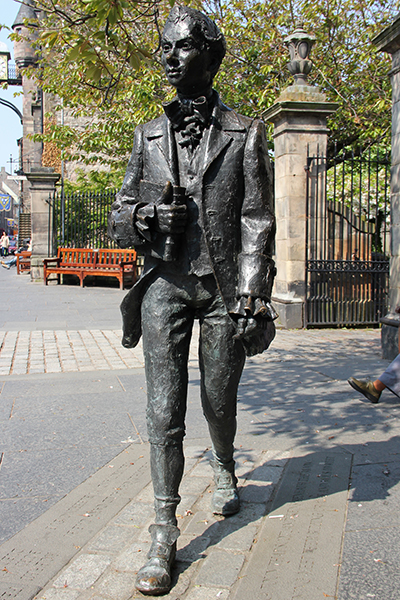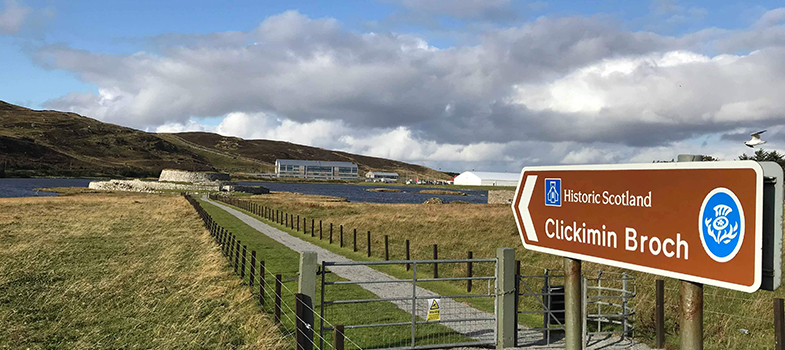11.4 Scots language in the 17th and 18th centuries
The 17th century is sometimes regarded as a sad and quiet period in the history of Scots language and literature. James VI had left for London, golf clubs swinging from the back of his carriage, taking his band of talented court poets with him. William Drummond of Hawthornden remained almost as a sole literary figure, writing his lonely, anglicised poetry at home in Scotland. Elizabethan English entered a flourishing golden age as James sponsored the work of William Shakespeare in the south.
As time went on, and despite the relocation of the royal court and the subsequent dissolution of the Scottish Parliament at the point of Union in 1707, the city of Edinburgh was to emerge during the 18th century as the centre of a great upsurge in scientific, economic and philosophical learning which became known as the European Enlightenment.
Many of the leading figures of this Enlightenment were Edinburgh Scots, natural communicators in Scots language. Their language became a source of embarrassment and insecurity for them as they sought to please southern readers and associates. David Hume famously and obsessively checked the manuscripts of his great works to identify and eradicate rude lexical or grammatical ‘Scotticisms’.
The Scottish aristocrats of the 17th and 18th centuries sent their sons to be privately educated in England, where they learned the southern language, which came to be regarded as ‘polite’ or ‘refined’. ‘Elocution’ lecturers plied a lucrative trade, capitalising on linguistic snobbery and cultural insecurity that survives to this day.

But the Scots Language wouldn’t disappear. The great city poet Robert Fergusson published his vibrant, learned Edinburgh work in flamboyant Scots. The young Robert Burns was to visit Fergusson’s grave, and kiss the soil. These two poets were at the heart of what became known as the ‘Vernacular Revival’ of the late 18th century, with Burns in particular becoming the world’s most famous poet – and writing his greatest poetry in braid Scots.
Activity 8
In this activity you will work with an extract from Burns’ ‘Address to the Deil’ [Tip: hold Ctrl and click a link to open it in a new tab. (Hide tip)] (1785) that highlights how the poet was able to use his Scots to bring together philosophical and religious thought with elements of the folk tradition - and all in the language of Lowland Scotland.
Part 2
Listen to the first two verses of Burns’ poem. Then record yourself reading these lines out and compare your pronunciation with that of our model.
Transcript
Listen
O Thou, whatever title suit thee! Auld Hornie, Satan, Nick, or Clootie! Wha in yon cavern grim an sootie, Clos’d under hatches, Spairges aboot the brunstane cootie, To scaud poor wretches!
Hear me, auld Hangie, for a wee, An let poor, damned bodies bee; I’m sure sma pleasure it can gie, Ev’n tae a deil, To skelp an scaud poor dogs like me, An hear us squeal!
Model
O Thou, whatever title suit thee! Auld Hornie, Satan, Nick, or Clootie! Wha in yon cavern grim an sootie, Clos’d under hatches, Spairges aboot the brunstane cootie, To scaud poor wretches!
Hear me, auld Hangie, for a wee, An let poor, damned bodies bee; I’m sure sma pleasure it can gie, Ev’n tae a deil, To skelp an scaud poor dogs like me, An hear us squeal!
11.3 Scots in Renaissance and Reformation times
